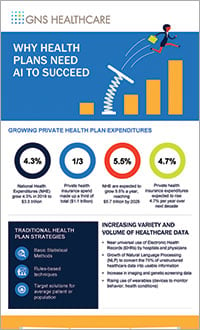
One of the more discussed topics in healthcare over the past decade has been the transition to a value-based system. No doubt it's a worthy goal, however the road has been a bumpy one at best. One of the toughest challenges has been getting a handle on the concept of value: how to define it, how optimize it, how to price it and what value means across the healthcare ecosystem.
While the conversation tends to take place in silos, moving to a value-based system means having conversations among all stakeholders. Bringing pharma, PBMs and payers to the same table to talk value is just one way to start moving the discussion in the right direction, and that’s exactly what we did at our 2nd Annual GNS Precision Medicine Forum in June. Three executives: one from a payor, one from a pharmacy benefits manager, and one from a pharma company joined us for an animated discussion on what value means and how to measure it.
Defining value
One area that garnered much discussion and limited agreement, was how do we define value when it comes to healthcare. One point coming from the panel was that although the drumbeat of criticism has revolved around pricing, the problem really comes down to one of value.
Patients intuitively feel they are not getting value for the amount of money they are spending for a myriad of reasons including price inflation across healthcare, especially in light of the prevalence of high deductible health plans. Ultimately, if patients are defining ‘value’ as receiving the right treatment, from the right providers, at the right time with the ‘right’ outcome for the ‘right’ cost – then we can all agree that there is much room for improvement.
To make matters more complicated, payers are not only managing their own risk, but also the risk for those businesses that have chosen to self-insure. Executives at these large self-insured businesses are measuring value in terms of access, wellness, illness burden, but ultimately in what they and their employees have to pay to access care.
Biopharma defines value in terms of what therapies do for patients, caregivers and for society at large – traditionally described in terms of ‘efficacy and safety’. They also look at value over time – what do new drug innovations yield not just in year one, but in year five, ten, and beyond. For example, there has been a huge “value exhaust” that has created an ability to drop cardiovascular mortality by more than 50 percent over the last 15 years.
Optimizing real world value
The crux of the discussion was not merely an attempt to define value but how to optimize value across the entire healthcare continuum.
The first step is to move away from value as an amorphous concept and make it clearly measurable and defined over a period of time with clearly delineated endpoints. To get there requires articulating and agreeing on the incremental cost effectiveness for which we’re willing to pay.
The next important factor in optimizing value is to get patients more involved in the process. There needs to be more conversations with patients on what they want or need when it comes to their care. A weekend runner may decide they’d rather not go through an extensive surgical procedure to treat an ankle injury. A serious marathoner, on the other hand, may decide that such surgery is vital, and they are willing to pay for it. The healthcare value for each individual is different, so his or her input must be considered before treatment decisions are made.
The challenge is using the data and analytics power that is now readily available to influence individuals around adherence, gaps in care and drug interactions. The key is bringing more services into communities when they are needed and wanted. A crucial part of the equation is leveraging AI to drive precision medicine.
Finally, healthcare value must be considered in more areas than simply drugs which makes up only 14 percent of overall healthcare costs. Taking a hard look at performing the optimal procedures and getting patients to the most appropriate facility to treat them are important steps to enhancing value in healthcare.
As healthcare leaders continue to face the value conundrum addressing the challenge successfully hinges on the effective use of technology, data, machine learning and precision medicine. Increasing the knowledge of what works for whom whether through drugs, devices or procedures can go a long way toward solving the “value problem.”
For more information on how to incorporate AI into intervention optimization, check out our infographic.


